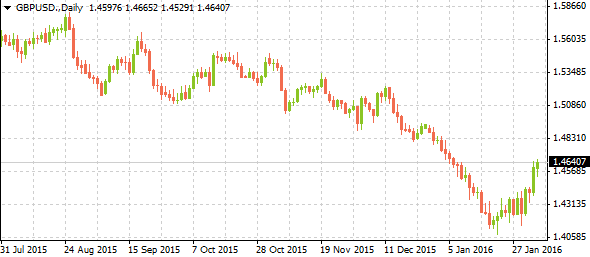The single dissenter common to the last several monthly Monetary Policy Committee meetings, Ian McCafferty, has until today hawkishly opined that the UK economy is ready for higher rates despite overwhelming opposition to his views thus far. His stance changed today during a vote that saw him and fellow members unanimously decide to keep rates at 0.50% after facing a report that forecasted slowing economic growth. McCafferty’s reversal shows the pressure that falling GDP expansion and stubborn inflation have on policymakers in the United Kingdom, who are increasingly worried about their country’s financial outlook. Today’s report clearly illustrated the concerns within the group that the pace of growth attached to current rates will put inflation at only 1.00% by the end of this year and near its target by the first half of 2018. Low interest rates should help to accommodate growth amidst troubling times, with GDP forecasts for 2016 sliced by 0.30% to 2.20% from the 2.50% cited in November’s projections.

Though the nearly unanimous vote did not arrive with any concrete policy changes, it represents a fundamental shift in sentiment within the voting body that adjusted policy may help to drive results in the future. Bank of England Governor Mark Carney recently stated the Bank’s willingness to ease further should a weak inflation and growth backdrop require action. For now, weak consumer-price growth is having a positive effect on consumption by staying at 0.20% annual growth, but if the slow upwards momentum is replaced by a deflationary trend, consumption may also reverse as consumers save in anticipation of lower future prices. Unused capacity in the economy is a main factor when considering this year’s trajectory, though a hearty services sector has thus far helped to stave off external risk by adding to the domestic tailwinds. These and other risks keep the pound biased downwards, though recent momentum higher versus the Dollar remains intact due to increasingly dovish comments from US policymakers.
